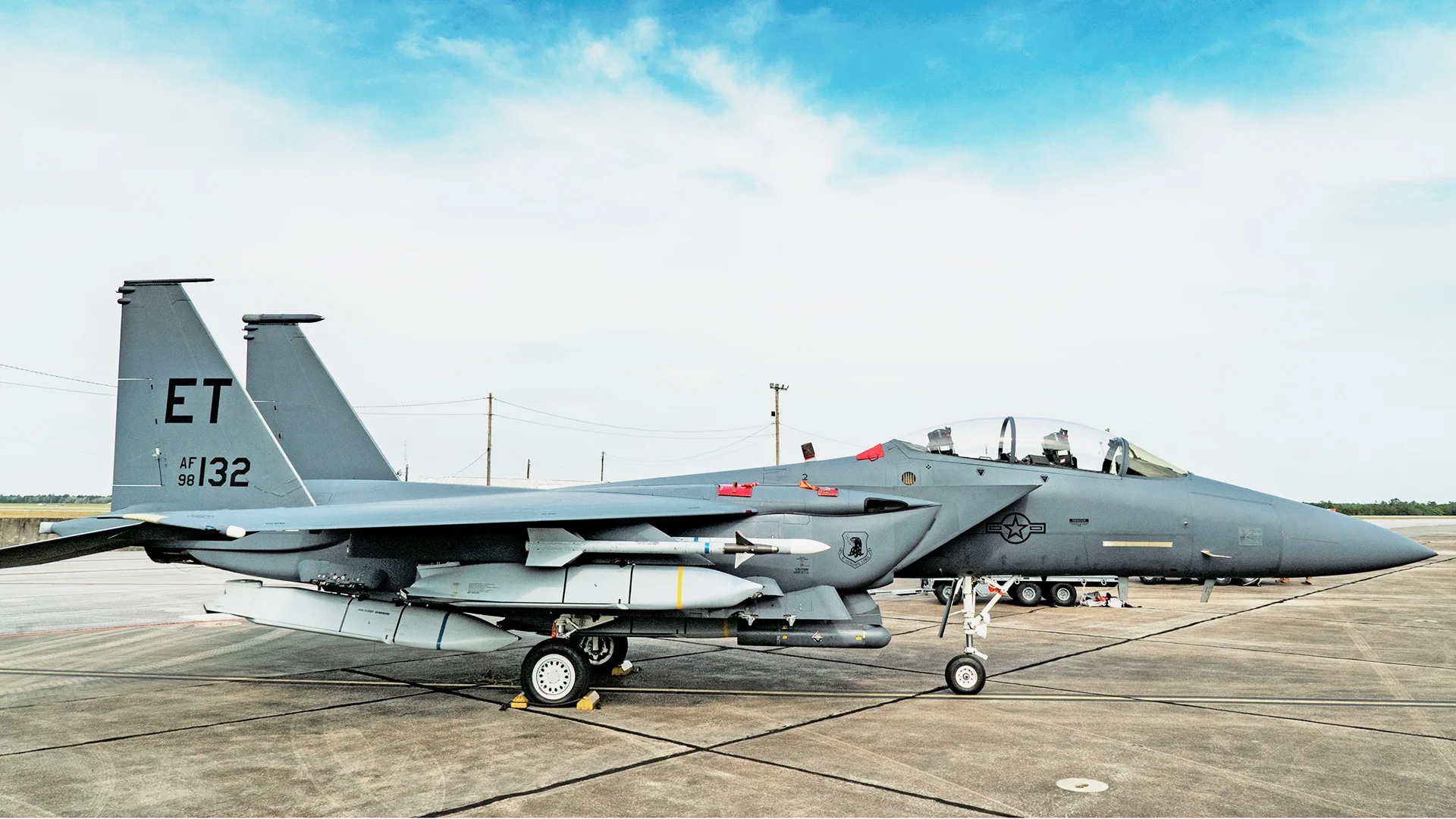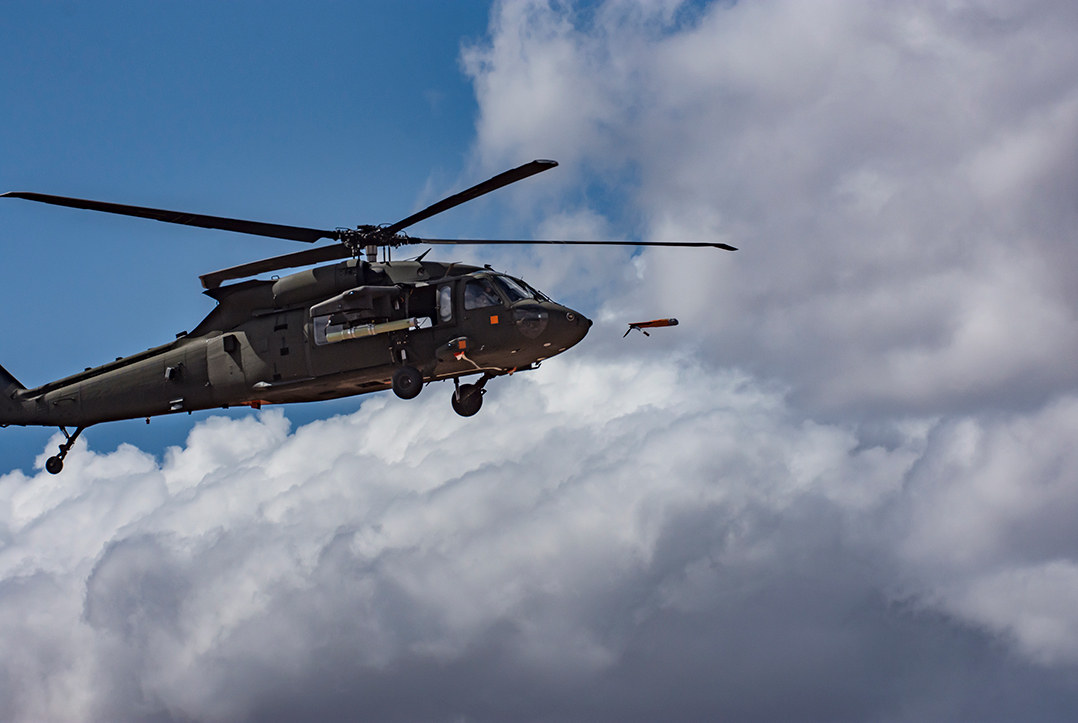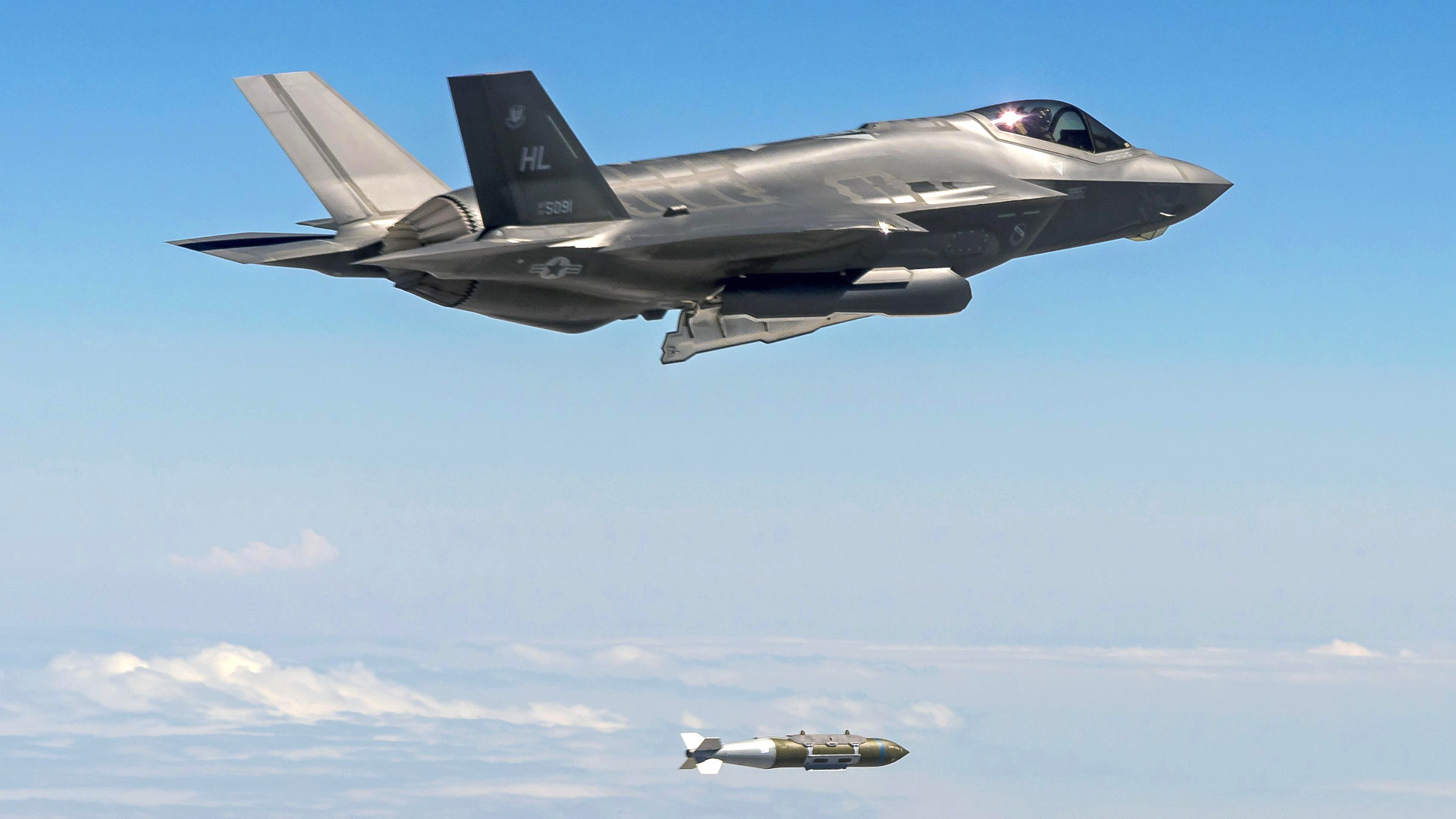The U.S. Navy is looking to add four air-to-surface missiles onto the F-35 Joint Strike Fighter, one of which, the AGM-114 Hellfire air-to-ground missile, was not previously known to be planned to be added to the Joint Strike Fighter’s armory.
Alongside the Hellfire, the other three weapons the Navy says it plans to integrate on the F-35 comprise the AGM-158 Joint Air-to-Surface Standoff Missile (JASSM), a stealthy standoff cruise missile; the AGM-158C Long-Range Anti-Ship Missile (LRASM), a maritime strike version of the JASSM; and the AGM-179 Joint Air-to-Ground Missile (JAGM), a precision-guided munition that was developed to replace the Hellfire and the Maverick air-to-ground missiles, among others.

In an announcement on the U.S. government’s System for Award Management (SAM) website, the Naval Air Warfare Center Weapons Division (NAWCWD) China Lake says that it intends to procure research, development, test, and evaluation (RDT&E) services from Lockheed Martin, the manufacturer of all four missiles. These services “will provide design and development studies, technology demonstrations and engineering services for rapid technology development,” continuing to modify the JASSM, LRASM, JAGM, and Hellfire for use by the F-35, as well as the integration itself.
Looking at the baseline missiles in turn, the AGM-158 JASSM is a critical weapon for the F-35. In particular, the combination of a stealthy long-range strike weapon and a low-observable platform provides a highly robust potential means to attack key enemy targets at standoff ranges, including breaking down or otherwise degrading a hostile anti-access/area denial (A2/AD) network. Unlike the U.S. Air Force, which has procured the extended-range version of the missile, or JASSM-ER, with a range of at least 575 miles, the Navy has focused on the baseline JASSM, which still offers a range of more than 230 miles.

The LRASM, meanwhile, is based on the JASSM but was originally developed primarily to strike maritime targets, including high-value surface combatants. Like the JASSM, it is a subsonic standoff weapon with stealthy features and employs highly advanced guidance and targeting systems, as you can read more about here. While the Navy shunned the JASSM-ER, it has chosen a longer-range version of the LRASM that can be used to strike ground targets, too. This is the AGM-158C-3 or LRASM-ER, that will have both anti-ship and land-attack capabilities. Both versions of the LRASM are a big deal for the F-35, which currently lacks any dedicated anti-ship missile — at least until the full integration of the Norwegian-designed Joint Strike Missile (JSM), which can be carried internally, but is a multi-role land attack missile with anti-ship capabilities.

The size of the JASSM and LRSAM means the F-35 is restricted to the external carriage of two examples mounted on pylons under the wings. While this impacts the jet’s stealthy characteristics, these weapons still offer them a highly valuable standoff capability.
The JAGM, by contrast, is designed to hit targets that are much closer. In its basic air-launched form, JAGM can hit targets at around 10 miles. The improved JAGM-MR at least doubles that range performance, but as far as we know has not been adapted for air launch, so far. Thanks to its tri-mode seeker, JAGM has a ‘fire and forget’ capability, too, conferring another level of survivability on the launch platform gets, since it’s not required to keep its own sensors slaved to the target. It also allows for engaging smaller targets, like armored vehicles or small boats, in any weather and while they are moving.

The air-launched version of JAGM is known as JAGM-F or JAGM Increment 3 and has been tested from Navy F/A-18E/F Super Hornet, as well as being slated for integration on the U.S. Marine Corps F-35B and AV-8B Harrier II. Unlike the much larger JASSM and LRSAM, the JAGM could possibly be launched from the F-35’s internal weapons bays. One possibility for carriage might involve a four-weapon rack similar to that used for the GBU-39 Small Diameter Bomb, to increase the maximum number that can be carried, although conventional rail launchers are an option, too. These weapons would have to drop free before their motors ignite though, as opposed to be launched from an exterior rail. The feasibility of this is not clear at this time.

While the F-35 (specifically the F-35B) had been associated with the JAGM in the past, the latest announcement may well be the first time that integration of the missile has been confirmed.
The Hellfire, however, is a weapon not previously known to be associated with any version of the F-35. Indeed, the missile was once intended to be replaced by the JAGM, although that has so far not happened, with the program for the successor missile proceeding slowly. Moreover, the Hellfire has, as far is known, never previously been operationally integrated on a fast-jet platform.

Roughly the same size as the JAGM, the Hellfire would also likely be suitable for internal carriage in the F-35, although this would appear to restrict the aircraft from employing versions of the missile using radar guidance. As opposed to Hellfire missiles that use laser guidance, the AGM-114L variant, for example, offers a lock-on-after-launch capability. In this mode, the F-35 would use its unrivaled array of sensors to find a target, or targets, with the Hellfire using its onboard inertial guidance system to bring the target within lock-on range. At that point, the missile’s millimetric radar seeker would acquire the target.
This would allow the F-35 to rapidly engage multiple targets in all weather conditions while retaining its stealth characteristics (at least until the moment of launch). It may be possible to use the laser-guided Hellfire variants, but they would have to lock onto the laser after release.

There is also the possibility that the Navy is looking to integrate a longer-range Hellfire version on the F-35. The AGM-114R-4 version, tested from an MQ-9 Reaper drone during last year’s biennial Valiant Shield exercise, is said to fly roughly three times as far as earlier variants of the missile.
Since the baseline Hellfire has a range of somewhere between four to just under seven miles, depending on the variant, the modified long-range AGM-114R-4 is thought likely able to reach up to around 21 miles under optimal conditions. But launching the Hellfire from a high-flying and fast-moving platform like the F-35 would be a new development and would certainly result in a further extended reach for the missile.
Since the AGM-114R-4 uses a single-mode laser seeker, one option might be to combine it with a separate asset located downrange and able to ‘paint’ the target for the launching F-35. Alternatively, the AGM-114R-4 could also potentially be adapted with a different guidance package if it were to be integrated into the F-35.
As well as the work to integrate the baseline versions of the four missiles, the contract with Lockheed Martin does seem also to include scope for further modifications of these weapons.
As the announcement states: “Modifications to these systems could include enhancements such as Line of Sight/Non-Line of Sight (LOS/N-LOS) technologies for seekers, multi-mode seekers, tube-launched Unmanned Aircraft Systems (UAS), autonomous weapons employment and precision targeting, aircraft/weapons integration, and similar applications.”
In particular, the reference to tube-launched UAS is intriguing, as this, again, is not something that has previously been known to be under consideration for the F-35. Exactly what kinds of drones would be included, how many, and how their tube launchers would be integrated with the F-35 is unclear, as are the kinds of missions that the drones themselves would be expected to undertake.

However, equipping crewed aircraft with tube-launched drones is certainly a growing area of interest for the U.S. military.
Tube-launched drones like the ALTIUS-600, with a maximum range of around 275 miles, and which can remain airborne for at least four hours, have become increasingly popular within the U.S. military in recent years. In an airborne application, the ALTIUS-600 can be air-launched via a Common Launch Tube (CLT). While the default configuration is geared toward surveillance, featuring a sensor turret with electro-optical and infrared cameras, the design is modular, as well, and can also be configured for one-way attack missions. Signals intelligence systems, electronic warfare, and decoy configurations are also options.

More generally, the family of drones known as air-launched effects (ALE) are very likely to be critical for the survivability of the F-35 in future high-end warfare scenarios. Ultimately, whether tube-launched or otherwise, smaller ALE-type drones launched from F-35s will be capable of working together as networked swarms to perform various missions, including intelligence, surveillance, and reconnaissance (ISR), electronic attack, decoy, and strike. These would come very much into their own in highly contested areas, helping enhance the survivability of the F-35 and platforms and weapons, especially in the suppression and destruction of enemy air defenses (SEAD/DEAD) role. For the Marine Corps, in particular, drones of this kind are known as Long-Range Attack Munitions or LRAMs, something you can read more about here. F-35s launching ALE’s with electronic warfare payloads could provide critical stand-in jamming of air defense sites, opening up holes in an enemy air defense network for infiltration or just making attacks on those air defense sites more plausible.

“With the support of the Office of the Under Secretary of Defense for Research and Engineering’s Joint Capability Technology Demonstration office, we will begin the Long-Range Attack Munition (LRAM) project, to rapidly develop and field a low-cost, air-launched, family of loitering and swarming munitions,” Marine Corps Commandant Gen. David Berger wrote in prepared remarks for a hearing before the Senate Appropriations Committee in March this year. “The LRAM can be employed by not just H-1s [AH-1Z attack helicopters and UH-1Y armed utility helicopters] and F-35s, but also palletized and employed from MV-22s, CH-53Ks, and C-130s, thereby significantly expanding our magazine depth.”

However, while these aspects of the effort remain generally unclear, Navy efforts to integrate the four offensive weapons on the F-35 are significant. While the first air-to-ground stores for the F-35 included the Joint Direct Attack Munition (JDAM) series and Paveway series laser-guided bombs, subsequent software modifications provided compatibility with the GBU-39 SDB and the AGM-154 Joint Standoff Weapon (JSOW). Work is now underway to integrate a wider array of stores, including the AGM-88G Advanced Anti-Radiation Guided Missile Extended Range (AARGM-ER), Stand-in Attack Weapon (SiAW), Joint Strike Missile (JSM), GBU-53/B StormBreaker, and the B61-12 nuclear bomb.

Noteworthy is the fact that all these weapons can be carried internally in the F-35, preserving its stealth characteristics. The JASSM and LRASM have to be carried on underwing pylons, while the JAGM and Hellfire could possibly be carried internally, although that’s not confirmed for the time being, and external carriage would be useful in less contested combat environments. This capability would drastically expand the F-35’s close air support capabilities and magazine depth.
However they are physically integrated on the platform, these four weapons will bring very useful new capabilities to Navy and/or Marine Corps F-35s and potentially those of other operators, too.
Contact the author: thomas@thedrive.com
